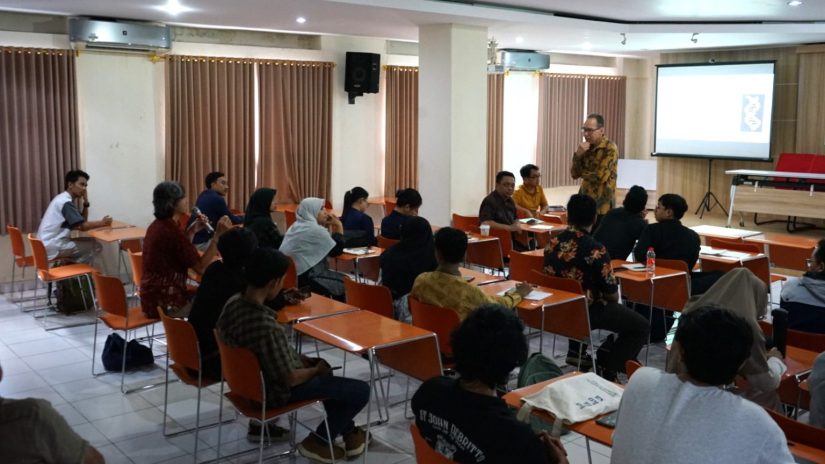
In a public lecture held on Friday, March 8, 2024, the UGM Department of History presented Dr. Maarten Fornerod, an associate professor in cell biology from Erasmus Medisch Centrum Rotterdam. In addition, he is also the secretary of the Indische Genealogische Vereniging (IGV) organization. This event is entitled Tracing Indonesian Family History in Europe: How the World Gets Smaller by Bigger Data From Archives and DNA which was held on the 2nd Floor of the Multimedia Room, Margono Building, Faculty of Cultural Sciences UGM from 09.00-11.00 WIB.
The presentation material presented by Dr. Maarten Fornerod related to the methodology of the object of study of family history is fairly new. He introduced a methodology that combines the use of archival sources and DNA data tracking of the object under study. He used this method to trace his family history which showed that his family had Chinese genealogy from Indonesia. Then, his relatives spread to several countries in Europe. Dr. Maarten Fornerod also explained that the Indonesian-Dutch heritage that spreads in Europe usually starts from the mother’s line. This is related to mitochondrial DNA, which scientifically is one hundred percent inherited from the mother.
Dr. Maarten Fonerod also said that IGV in collaboration with the VerhalenOverLeven Foundation is conducting a research project entitled “10,000 Voormoeders Project”. This activity aims to build a database consisting of photos, biographical data, and oral history information about 10,000 former Ancestral Mothers in Asia. The project invites the participation of the public who have genealogical connections to the Dutch East Indies or Indonesia to collect various information related to their ancestors. The database that is built is expected to navigate the various dimensions of information obtained to find out the family history of descendants of the Dutch East Indies or Indonesia in Europe.
“So, my conclusion is that… the archive and the DNA can be used to get a clear picture of individual histories, right? And this connection of individual histories, there are rich sources of human history, and they kind of complement, let’s say, top-down history, official history from the government,” said Dr. Maarten Fornerod.

